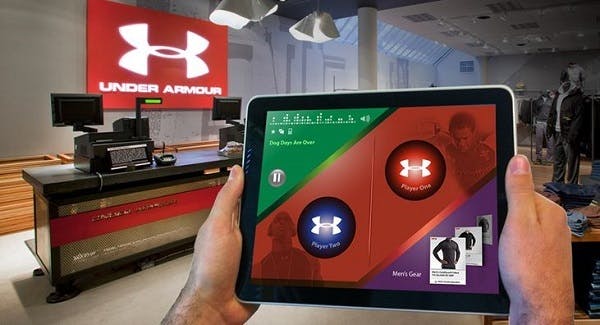So, what are the benefits exactly? Here’s what you need to know.
What’s the difference between multi-channel and cross-channel?
Before we get into it, let’s think about what cross-channel marketing actually means, as it can often be confused with another common practice – multi-channel marketing.
There are a key few differences. The first is that multi-channel means to have a presence on one or more channels – let’s say a website and a mobile app. On the other hand, cross-channel means to provide a seamless experience across a combination of several different channels.
For example, perhaps a customer might browse on the web, before being targeted via an email that they read on their mobile device. In this sense, cross-channel takes the basic theory of multi-channel and elevates it to create an overriding and seamless brand experience – as opposed to a one-off or fractured brand message.
So, what are the real benefits of a cross-channel approach?
Increasing engagement
Communicating with consumers on a single marketing channel might generate a certain level of success, but it also means that you are relying on a certain type of user behaviour. Checking your email when you wake up, for instance.
In contrast, using multiple channels means you are able to reach consumers at different times of the day and also at different points of the purchasing cycle. For example, while an email might drive click-throughs, an email combined with a delayed push notification might be enough to remind a consumer to follow through on a purchase.
Research suggests engagement levels are marginally increased with cross-channel messaging too. Braze found that when customers received outreach in two or more channels, levels of engagement were 166% higher than a single-channel rate and 642% higher than for customers who received no messages whatsoever.
Improving loyalty
As customers engage with a brand on a more regular basis, the chances of them becoming and ultimately staying loyal to that brand also increases. This is largely due to the consistency in messaging – one of the main features of cross-channel marketing.
Unlike multi-channel, which treats each platform differently (and is therefore likely to be inconsistent in terms of tone of voice or the message it is sending) – cross-channel places all platforms under one umbrella. When it comes to ecommerce, for example, this level of consistency means that common pain points can be avoided, such as seeing a social media advert for a sale, only to find out that it has ended on the brand’s website.
Regardless of the environment they are in, a cross-channel approach ensures that customers will have the same experience across the board. In turn, this is likely to increase satisfaction and lead to repeat interactions and engagements.

Aligning with consumer behaviour
According to MediaOcean, 53% of all UK adults now ‘media multi-task’ on a weekly basis, with the average user spending seven hours per day consuming media across multiple screens. This, combined with the growth in webrooming and showrooming (whereby consumers research on mobile before shopping in-store, or vice versa) proves that user behaviour is more fractured than ever before.
As a result, one of the most effective forms of cross-channel marketing is when brands are able to create cohesion between online and offline behaviour – and even better when this is personalised.
One good example of this is Under Armour, which allows users to find out product information by scanning barcodes via its app in-store. On the back of this data, it is then able to retarget customers based on browsing and purchasing behaviour, which also contributes to increased engagement and loyalty.

Barriers to overcome
While an increasing number of brands are beginning to recognise the benefits of a cross-channel marketing strategy, there can still be big barriers when it comes to implementation.
Breaking down silos
One of the biggest obstacles can be existing siloes within organisations. A brand might have one team for email, another in charge of social media, and another dedicated to ecommerce or customer engagement – with each team focused on a different set of goals and outcomes. According to Experian, this is the case for 58% of UK brands. The solution is therefore to try to break down these siloes, and to establish a single set of KPIs that all teams work towards – only then can overall success be measured.
Lack of single customer view
As a result of silos within organisations, siloed data can also occur. This means that it will then be impossible to achieve a single customer view – a vital step for delivering a consistent and personalised customer experience (often referred to as ‘omnichannel’). Without a SCV, customers are likely to be met with a fractured (and differing) experience at various touchpoints, rather than a seamless one.
Limitations in technology
Finally, marketers might also struggle to achieve a single customer view due to a lack of technology – and/or the skills required to interpret and act on data. Problems can also occur when new channels come into the mix, meaning that fresh technology will need to be integrated and new processes learnt.
Related reading:

Comments